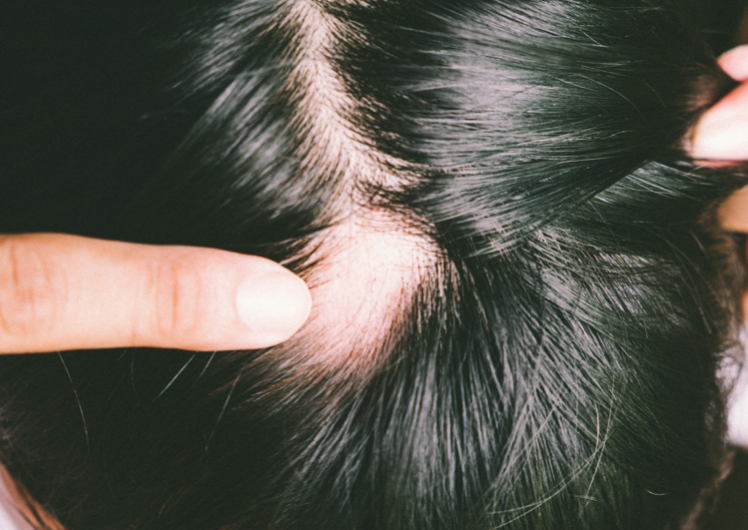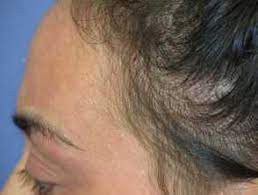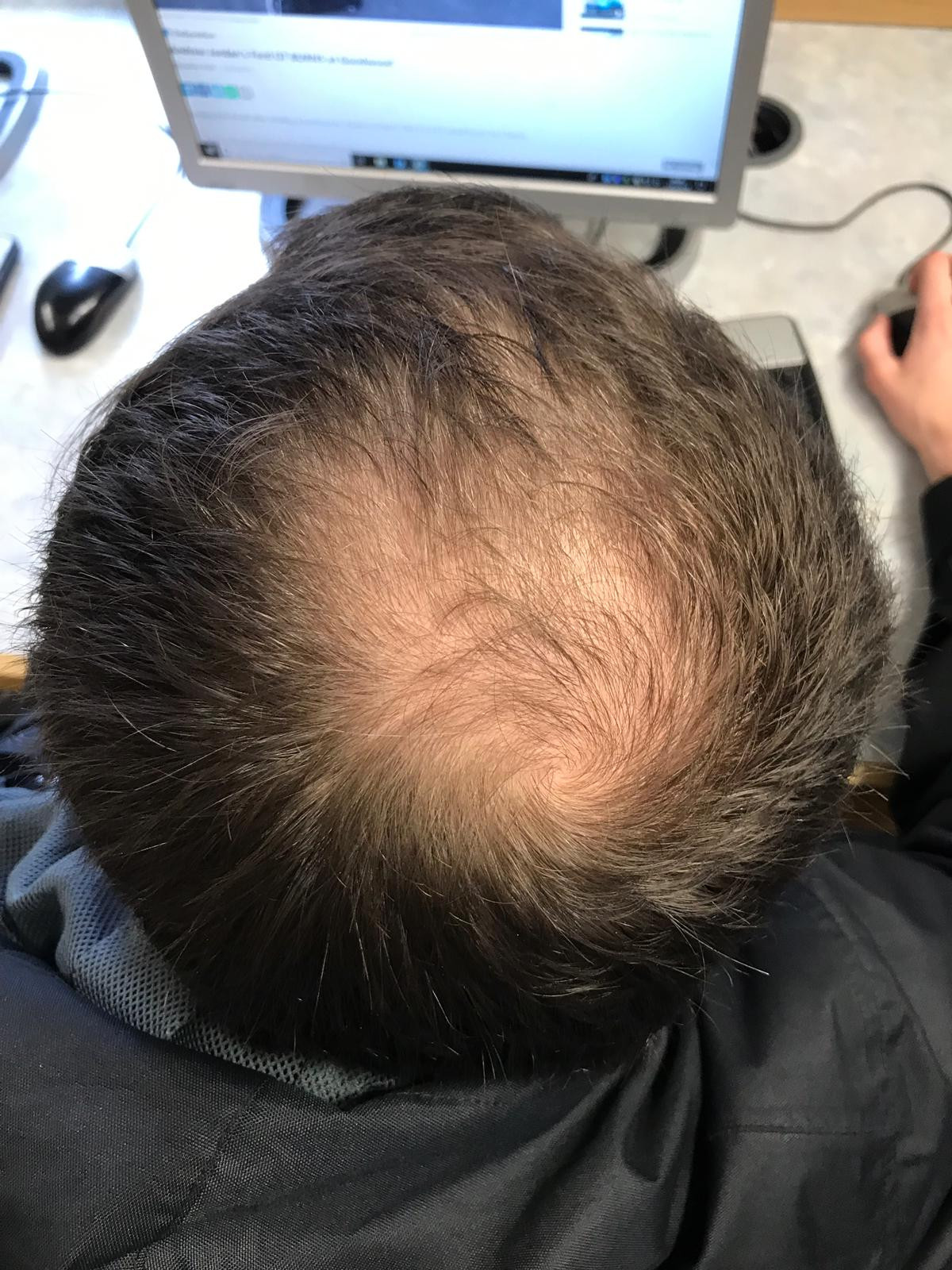Definition
Alopecia is a condition of baldness, where hair growth is significantly less than hair loss. This condition can affect not only the scalp but also other parts of the body. Alopecia can be either permanent or temporary. It is more prevalent on the scalp in men. The most common cause of alopecia is genetic predisposition. Baldness can be treated with specific therapies such as laser treatment and cosmetic solutions like wigs or makeup.
"Areata" means "patchy." Alopecia areata is characterized by uneven hair loss due to an autoimmune condition. Many individuals with alopecia areata experience hair loss in patches on the scalp, while only a few experience complete baldness of the scalp. The bald patches typically resemble coins.
Alopecia areata can affect individuals of all ages, though it is more common in young adults. Hair loss occurs over several weeks, and hair usually regrows within a few months. However, the new hair often falls out again due to ongoing inflammation in the body. In some cases, those with alopecia areata may also notice changes in their nails, such as pits or depressions on the nail surface.
Hair loss from alopecia areata is painless but can significantly impact one's appearance. It is often associated with conditions like depression, anxiety, and other psychological disorders.
In the United States, alopecia areata affects approximately 1 to 5 per 1,000 people. It is the most common form of alopecia after androgenetic alopecia, affecting men and women equally.
Causes
Alopecia areata is classified as an autoimmune disorder. Normally, the human immune system protects the body from pathogens by recognizing and attacking invading germs. In autoimmune diseases, the immune system mistakenly attacks the body’s cells. In alopecia areata, the immune system targets hair follicles, which are essential for hair growth. This attack disrupts normal hair growth. While the immune system does not permanently damage hair follicles, it causes recurrent hair loss.
Risk factor
Factors that may increase the risk of developing alopecia areata include:
- Young adulthood (20-40 years)
- Having other autoimmune conditions (Type 1 diabetes, lupus, thyroid disease, vitiligo)
- Family history of alopecia areata
- Family history of autoimmune diseases
Some studies suggest that emotional and psychological stress may trigger hair loss and alopecia areata, but no specific trigger has been definitively identified.
Symptoms
Alopecia areata manifests in several types:
- Patchy alopecia areata: Coin-shaped bald patches on the scalp and other hairy parts of the body.
- Alopecia totalis: Complete hair loss on the scalp.
- Alopecia universalis: Hair loss and baldness over the entire body, a rarer form.
Alopecia areata is unpredictable. In some, hair may regrow only to fall out again, while in others, new hair growth remains.
Symptoms of alopecia areata include:
- Hair loss in coin-shaped patches on the scalp.
- Damaged hairs around the bald patches that resemble exclamation points, with thin bases.
- No redness or scarring in the bald areas.
- Additional symptoms may include itching or a burning sensation.
After the formation of coin-shaped bald patches, predicting the course of the disease is challenging. Possible outcomes include:
- Hair regrows within a few months.
- The bald patches expand.
- Several small bald patches merge into larger areas, potentially leading to complete scalp baldness (alopecia totalis).
- Hair regrows but falls out again in episodes.
Other symptoms may include nail changes, such as pitted or irregular nail surfaces.
Diagnosis
To diagnose alopecia areata, a doctor will inquire about your primary complaints, nutritional history, family history of similar issues, and your medical history. The doctor will also perform a physical examination to assess the pattern of hair loss. Several tests that may be conducted include:
- Blood tests: These can help identify other causes of hair loss.
- Pull test: The doctor will gently pull several hairs to see how many come out, helping to determine the stage of the shedding cycle.
Scalp biopsy: A sample of scalp skin or hair roots is taken for microscopic examination to check for other causes, such as infections.
Management
Alopecia areata cannot be cured, but treatment can help hair regrow. In some cases, hair may regrow within a few months to a few years without specific treatment. However, doctors may offer treatments to expedite this process, including:
- Corticosteroids: Anti-inflammatory agents often prescribed for autoimmune conditions. For alopecia areata, corticosteroids can be administered via injection, orally (pills or tablets), or topically (applied to the scalp).
- Minoxidil: A medication used to treat hair loss. It may take 12 weeks for hair regrowth with minoxidil treatment.
Consult your dermatologist before using these medications.
Home Care
- Use makeup or wigs to conceal hair loss.
- Wear sunglasses to protect eyelashes from UV exposure, especially if lash loss occurs.
- Use head coverings to protect hair and scalp from irritants.
- Consume a healthy and balanced diet.
- Relieve stress with enjoyable activities.
Complications
Hair regrowth is possible in individuals who:
- Experience total baldness.
- Develop alopecia areata later in life.
- Have no nail changes.
- Lack of a family history of alopecia areata.
Prevention
While alopecia areata cannot be prevented, you can take steps to prevent further and more severe hair loss, such as:
- Hair care: Use a wide-toothed comb to prevent hair loss and avoid harsh styling practices, such as using very hot hair straighteners or dryers.
- Consult a doctor: Discuss hair treatments and supplements to maintain hair health.
- Quit smoking: Some studies indicate a link between smoking and male baldness.
When to see a doctor?
Consult a doctor if hair loss is bothersome and you seek further treatment. Seek immediate medical advice if you notice sudden, round patches of hair loss.
Looking for more information about other diseases? Click here!
- dr. Yuliana Inosensia
Bhargava HD. (2020). Alopecia areata. WebMD. Available from: https://www.webmd.com/skin-problems-and-treatments/guide/alopecia-areata
Cleveland Clinic. (2018). Alopecia areata. Available from: https://my.clevelandclinic.org/health/diseases/12423-alopecia-areata
Hoss E. (2020). Alopecia areata. MedlinePlus. Available from:https://medlineplus.gov/ency/article/001450.htm#:~:text=Alopecia%20areata%20is%20thought%20to,men%2C%20women%2C%20and%20children.
National Institute of Arthritis and Musculoskeletal and Skin Diseases. (2021). Alopecia areata. Available from: https://www.niams.nih.gov/health-topics/alopecia-areata
MayoClinic. (2022). Hair loss. Available from: https://www.mayoclinic.org/diseases-conditions/hair-loss/symptoms-causes/syc-20372926











